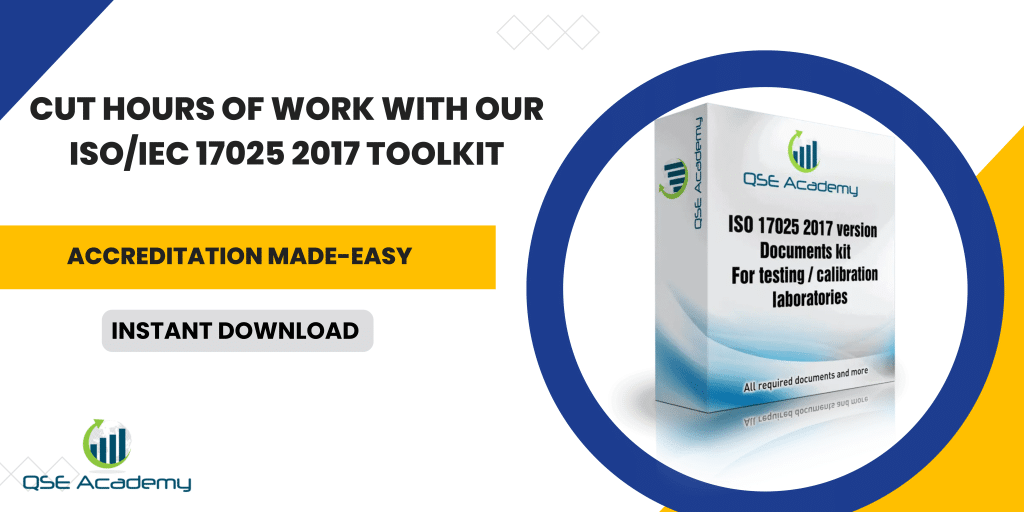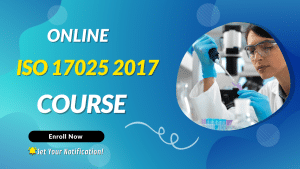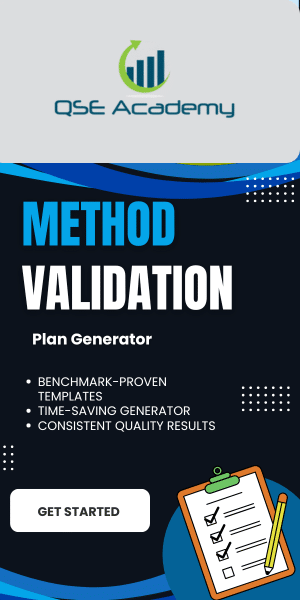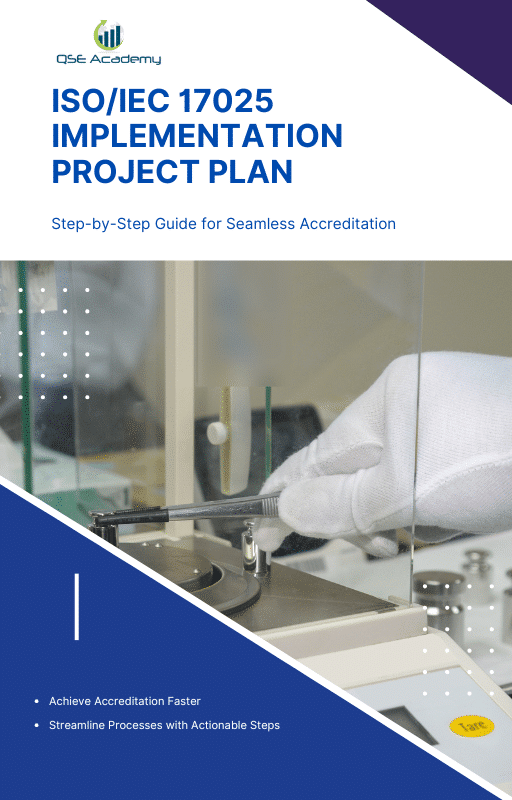ISO/IEC 17025 Myths Debunked in 3 Minutes
Last Updated on October 13, 2025 by Hafsa J.
Introduction: Let’s Clear the Air on ISO/IEC 17025
Let’s be honest—ISO/IEC 17025 still intimidates a lot of labs. I get it. Over the years helping testing and calibration laboratories across different industries, I’ve heard every misconception you can imagine: “It’s only for big labs,” “We need expensive equipment,” or “We’re certified to ISO 9001, so we’re basically 17025 too.”
Here’s what I’ve noticed: most of these myths come from secondhand information, outdated assumptions, or consultants who overcomplicate what should be a clear, empowering standard.
In my experience, once a lab understands what ISO/IEC 17025 actually requires, everything changes. It stops being a compliance burden and starts becoming a tool for credibility and consistency.
So, in the next three minutes, I’ll walk you through the most common myths I’ve seen in labs—debunked with practical insights and real-world lessons from the field. Whether you’re new to ISO 17025 or trying to simplify your system, you’ll walk away with clarity and confidence to move forward.
Myth #1: ISO/IEC 17025 Certification = Accreditation
Here’s one I hear all the time: “We’re going to get ISO 17025 certified next quarter.”
Let’s clear this up—there’s no such thing as ISO 17025 certification. You don’t get certified, you get accredited.
In simple terms, certification means a management system (like ISO 9001) was reviewed and found compliant with the standard’s requirements. Accreditation, on the other hand, means a recognized body—like a national accreditation body—has evaluated your lab’s competence, methods, and results against ISO/IEC 17025.
Think of it like this:
Certification says, “You follow a process.”
Accreditation says, “You’re technically competent to produce reliable results.”
In my experience, this misunderstanding often leads labs to prepare for the wrong kind of audit. They focus on paperwork instead of demonstrating technical competence—things like method validation, equipment calibration, and staff proficiency.
Pro Tip: When you talk to clients or partners, always say “ISO 17025 accredited laboratory.” It signals credibility and competence. That single word—accredited—changes how seriously your results are taken.
Now that we’ve cleared that up, let’s move on to another common myth that keeps labs stuck: the idea that ISO 17025 is only for large, high-budget facilities.
Myth #2: ISO/IEC 17025 Is Only for Big Laboratories
Let’s be real—this one frustrates me the most.
I’ve lost count of how many small labs tell me, “We’re too small for ISO 17025.”
Here’s the truth: size has nothing to do with it.
I’ve worked with one-person calibration shops operating out of modest facilities that achieved accreditation faster (and maintained it better) than big organizations with entire quality departments. Why? Because ISO/IEC 17025 is about competence, consistency, and confidence—not headcount or budget.
Here’s what I’ve noticed in small labs that succeed:
-
They start simple. They focus on getting their procedures right before over-documenting.
-
They build competence through training and method validation, not expensive software.
-
They use the standard to organize their work and strengthen credibility with clients.
This is important because accreditation actually levels the playing field. It tells your customers:
“Hey, we might be small, but our results are every bit as reliable as a national lab’s.”
Pro Tip: Start where you are. You don’t need fancy systems or massive teams—just clear processes, trained people, and evidence of competence.
Now that we’ve debunked the size myth, let’s tackle another common misconception: that ISO/IEC 17025 is all about documentation.
Myth #3: ISO/IEC 17025 Is Just About Paperwork
If I had a peso for every time someone said, “ISO 17025 is too much paperwork,” I’d have funded my own calibration lab by now.
Let’s get this straight—ISO 17025 isn’t about drowning in documents. It’s about proving consistency and reliability in how you do your work.
Here’s what I’ve noticed: labs that struggle with “too much documentation” are usually trying to copy someone else’s system. They download templates online, fill in forms they don’t understand, and end up with binders no one ever uses.
In my experience, successful labs flip the script. They keep it simple:
-
They document only what supports consistency.
-
They train staff to actually use procedures, not just file them.
-
They focus on evidence of competence—calibration records, validation data, and proficiency results.
Pro Tip: Don’t write procedures for auditors—write them for your team. The goal is clarity, not volume.
This is important because when documents match how your lab truly operates, audits become smoother, training gets easier, and results stay consistent.
Now that we’ve cleared the paperwork myth, let’s move on to the next one—perhaps the most damaging of all: the idea that once you’re accredited, you’re done.
Myth #4: Once You’re Accredited, You’re Done
Here’s a reality check—ISO/IEC 17025 accreditation isn’t a finish line. It’s the start of an ongoing commitment.
I’ve seen labs celebrate their accreditation like it’s the end of the journey—then slowly drift back into old habits once the audit is over.
In my experience, this mindset is one of the fastest ways to lose credibility (and your accreditation). ISO 17025 is built on continual improvement, not one-time compliance. That means your system should grow with your lab.
Here’s what the best labs do differently:
-
They treat internal audits as a tool, not a chore.
-
They actually review data trends—equipment performance, repeatability, and staff training—to make smarter decisions.
-
They close nonconformities with purpose, using root cause analysis instead of quick fixes.
Pro Tip: Think of accreditation as a maintenance plan, not a medal. You don’t stop servicing your car once it passes inspection—you keep it running smoothly year-round.
This is important because maintaining accreditation builds trust with clients and regulators. It shows that your lab doesn’t just meet the standard—you live it.
Now that we’ve tackled that, let’s look at one more myth that often trips people up: the idea that ISO/IEC 17025 is too technical or complex for your team to handle.
Myth #5: ISO/IEC 17025 Is Too Complex for Our Team
Let’s be real—ISO/IEC 17025 sounds intimidating at first glance. All the talk about uncertainty, traceability, and validation can make even experienced technicians hesitate. But here’s the truth: it’s only complicated if you try to do everything at once.
I’ve helped labs of all sizes implement 17025 systems—from food testing to calibration workshops—and here’s what I’ve learned: once you understand the logic behind the standard, it actually simplifies your work. It creates structure, eliminates guesswork, and gives your team confidence in their results.
Here’s what helps make it easier:
-
Break it down into sections—management requirements, technical requirements, and continual improvement.
-
Train gradually. Start with the basics like equipment calibration, traceability, and competence.
-
Assign ownership. Don’t expect one person to handle it all; build small accountability roles across your team.
Pro Tip: Don’t aim for perfection from day one. Build consistency first, then refine over time. ISO 17025 is a framework meant to evolve with your lab—not a one-time exam you pass or fail.
This is important because when your team understands why each requirement exists, they stop seeing it as red tape and start using it as a quality tool. That’s when the system really starts to work for you, not against you.
Now that we’ve busted the major myths, let’s tackle a few quick questions I often get from lab managers about ISO/IEC 17025.
FAQs: Common Questions About ISO/IEC 17025
1. How long does it take to get ISO/IEC 17025 accredited?
In my experience, it usually takes anywhere from 6 to 12 months, depending on your lab’s readiness and complexity. Smaller, focused labs often move faster because decision-making is quicker. The key is preparation—build your system around how your lab actually operates, not around templates or theory.
Pro Tip: Start with a gap assessment. It helps you pinpoint what’s missing so you can plan realistically instead of rushing into an audit unprepared.
2. What’s the difference between ISO/IEC 17025 and ISO 9001?
This one confuses a lot of people. Here’s the short version: ISO 9001 focuses on quality management systems—it’s about how an organization ensures consistent service or product quality. ISO/IEC 17025, on the other hand, goes deeper—it focuses on technical competence.
So, while ISO 9001 asks, “Do you have a process?”, ISO 17025 asks, “Can you prove your results are valid and reliable?”
Many labs actually integrate both—they complement each other beautifully.
3. Does ISO/IEC 17025 apply to field testing or on-site calibration too?
Absolutely. The standard isn’t limited to fixed laboratories. Whether you’re calibrating instruments on-site, collecting samples in the field, or testing in mobile units, ISO 17025 applies as long as you’re producing test or calibration results.
Pro Tip: Just make sure your on-site activities are controlled—document your methods, manage environmental conditions, and maintain traceability. Accreditation bodies will look for consistency regardless of where the work happens.
Conclusion: Key Takeaways and Next Steps
Let’s wrap this up.
ISO/IEC 17025 isn’t as mysterious—or as intimidating—as some people make it sound. Most of the confusion comes from outdated assumptions or trying to apply someone else’s system instead of building your own.
Here’s what I want you to remember:
-
Accreditation isn’t certification. It proves technical competence, not just process compliance.
-
Small labs can absolutely achieve 17025. It’s about consistency, not size.
-
It’s not about paperwork. It’s about proving reliability and confidence in your results.
-
Accreditation is ongoing. It’s a cycle of improvement, not a one-time win.
-
The standard isn’t too complex. Once you understand the “why,” it all starts to make sense.
In my experience, labs that truly embrace ISO/IEC 17025 see a big shift—not just in audit results, but in culture. Staff take more ownership. Clients trust the data more. And management finally sees measurable returns on quality investments.
If you’re ready to move beyond the myths and actually start your accreditation journey, begin with a simple self-assessment or a gap analysis. It’s the fastest way to see where you stand and what to fix first.
Your lab doesn’t need to be perfect to start—just willing to take the first step.
I hold a Master’s degree in Quality Management, and I’ve built my career specializing in the ISO/IEC 17000 series standards, including ISO/IEC 17025, ISO 15189, ISO/IEC 17020, and ISO/IEC 17065. My background includes hands-on experience in accreditation preparation, documentation development, and internal auditing for laboratories and certification bodies. I’ve worked closely with teams in testing, calibration, inspection, and medical laboratories, helping them achieve and maintain compliance with international accreditation requirements. I’ve also received professional training in internal audits for ISO/IEC 17025 and ISO 15189, with practical involvement in managing nonconformities, improving quality systems, and aligning operations with standard requirements. At QSE Academy, I contribute technical content that turns complex accreditation standards into practical, step-by-step guidance for labs and assessors around the world. I’m passionate about supporting quality-driven organizations and making the path to accreditation clear, structured, and achievable.












